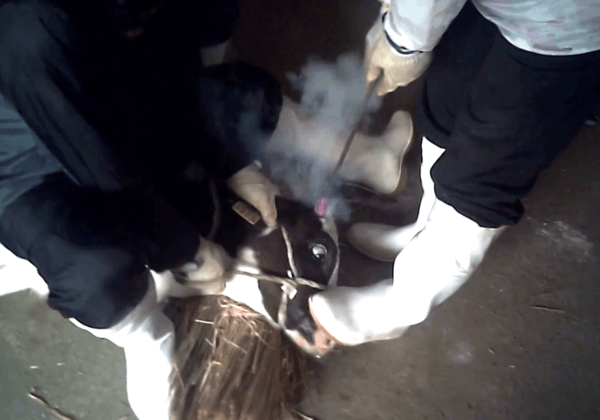What Is Gelatin?
Gelatin is a protein obtained by boiling skin, tendons, ligaments, and/or bones with water. It’s usually obtained from cows or pigs. It’s not vegetarian or vegan—so check the ingredient list on the backs of products carefully so you can avoid it.
Ever wondered what gelatin REALLY is? WARNING: It’s gross. ? #GoVegan pic.twitter.com/66KkKiiMuT
— PETA Asia (@PETAAsia) January 4, 2020
It’s often used as a binding agent. Watch out for candy that has a gummy texture, as it probably contains gelatin. Also be on the lookout for “isinglass,” a type of gelatin made from fish, which is sometimes used in the wine-refining process. And when it’s time to buy makeup or other beauty products, check those ingredients, too, because gelatin can be found in odd places, such as in face masks and nail polish remover. You can search PETA US’ cruelty-free company database to learn which companies are cruelty-free and/or vegan.
Products That May Contain Gelatin
- Cakes
- Candy
- Cosmetics
- Face masks
- Fruit gelatin (e.g., Jell-O)
- Ice cream
- Marshmallows
- Photographic film
- Pudding
- Shampoo
- Vitamins
- Wine
- Yogurt
DISGUSTING: Gelatin used in candy is made from SKIN, BONES & TENDONS
RT if this grosses you out! #Reasons2GoVegan pic.twitter.com/14lAJQf6Bs
— PETA Asia (@PETAAsia) May 11, 2015
Gelatin Alternatives
When a recipe calls for gelatin, there are a couple of easy-to-find alternatives that you can use instead.
Agar-Agar
This flavorless gelling agent, derived from cooked and pressed seaweed, is available flaked, powdered, or in bars. For best results, use powdered agar-agar or grind the flakes or bar in a coffee grinder or food processor, then mix it with water or another liquid and cook on the stove, stirring frequently until it dissolves. When used in a recipe, agar-agar sets in about an hour and doesn’t require refrigeration to gel. For a firmer gel, add more agar-agar, and for a softer gel, add more liquid. And don’t worry if you don’t get it right the first time—you can fix it simply by reheating it.
Here are some general guidelines on using agar-agar in recipes:
- Substitute powdered agar-agar for gelatin using equal amounts.
- 1 Tbsp. agar-agar flakes is equal to 1 tsp. agar-agar powder.
- To set 2 cups liquid, use 2 tsp. agar-agar powder, 2 Tbsp. agar-agar flakes, or 1 bar.
- Keep in mind that highly acidic ingredients, such as lemons, strawberries, oranges, and other citrus fruits, may require more agar-agar to set. Also, the enzymes in fresh mangoes, papaya, and pineapple inhibit the gelling capability of the agar-agar preventing it from firming up. Cooking these fruits before adding them to a recipe, however, neutralizes the enzymes so that the agar-agar can set.
Carrageenan
Also known as Irish moss, this seaweed is heavily exported by China to global markets, although the Philippines is the largest producer of industrial carrageen.
Carrageenan works best in soft gels and puddings. To prepare carrageenan, rinse it thoroughly, then soak it in water until it swells up. Add it to the liquid you want to set, boil for 10 minutes, then remove it. One ounce of carrageenan will gel 1 cup of liquid.
Jell-O Copycat Recipe
What should you do when you’re in the mood for Jell-O? Try PETA US’ recipe for a gelatin-free vegan version.

1 cup fruit juice
1 cup water
1/4 cup sugar
1/2 tsp. agar-agar powder
- Add all the ingredients to a saucepan and stir over medium-high heat.
- Bring to a boil for 2 minutes.
- Pour into molds or small cups.
- Refrigerate for 2 to 3 hours.
- Serve
Makes 4 servings
No animal wants to be used for their body parts. Pledge to go vegan today!








